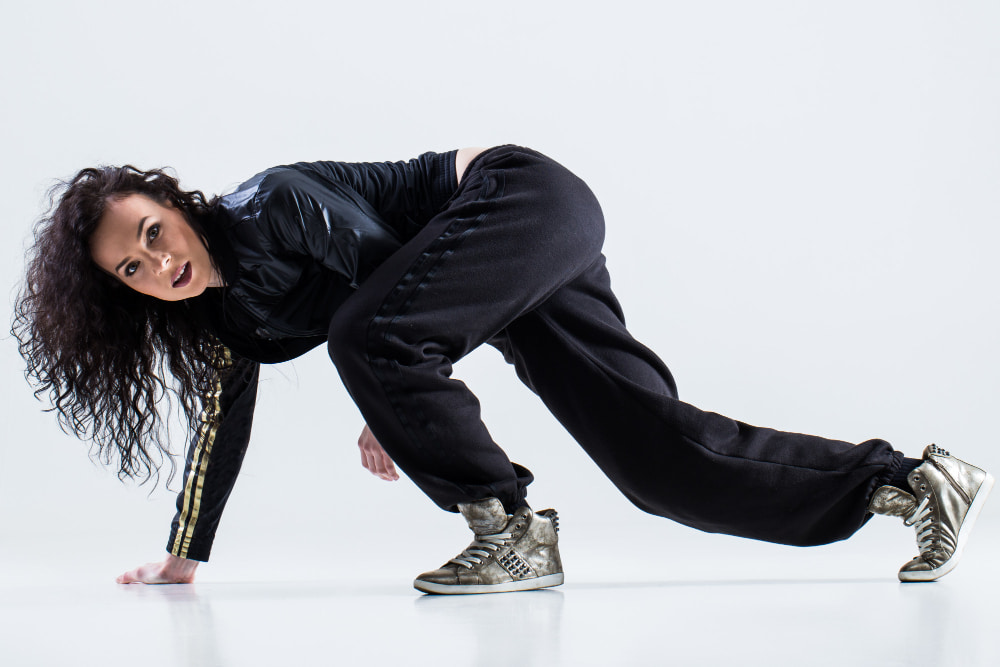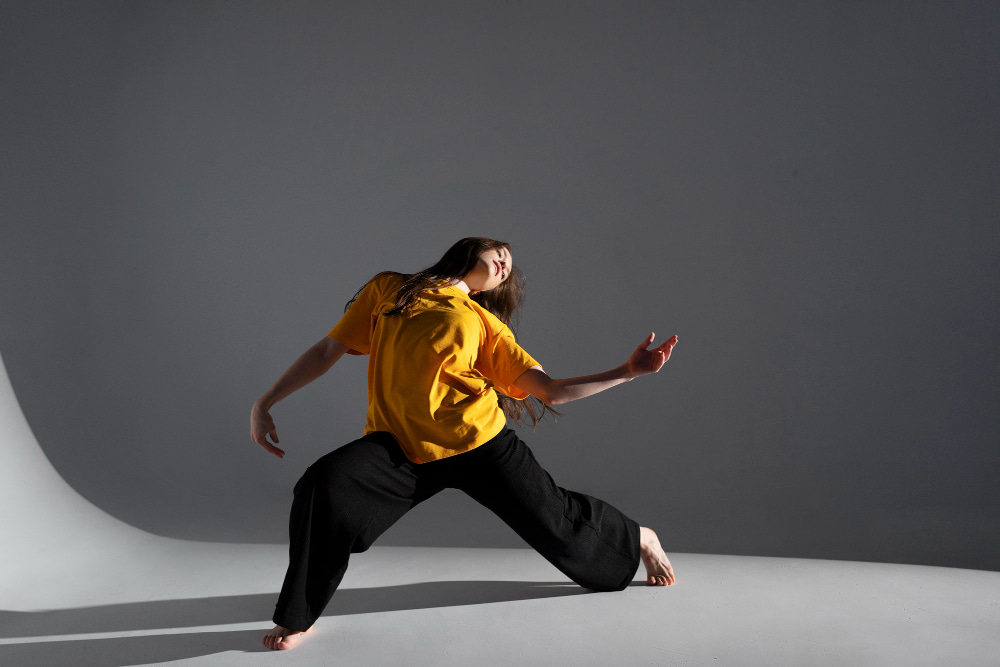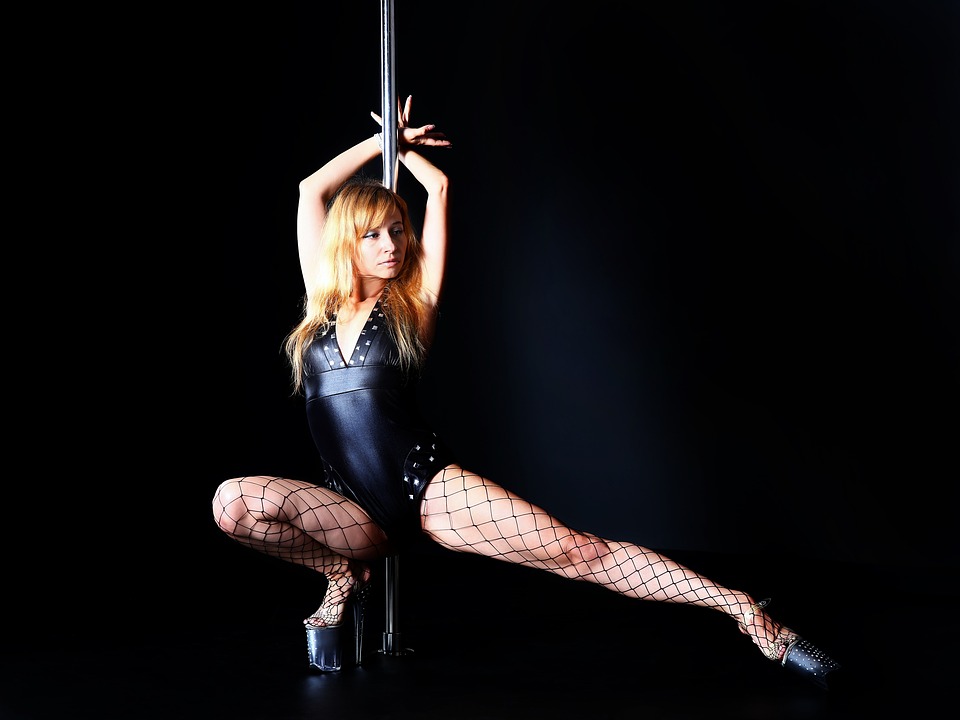
Summary
Discover waacking dance: The art of expression
Do you want to discover waacking, a unique and energetic dance style? Born in the LGBT clubs of Los Angeles in the 1970s, waacking is distinguished by its rapid movements and dramatic poses. This dance allows you to express your creativity while connecting to disco and funk music.
Summary
What is waacking?
In this article you will learn the basics of waacking, advanced techniques and tips for training effectively. Whether you're a beginner or experienced, you'll find tips to improve your style and technique.
Waacking is a dynamic and expressive dance style that originated in Los Angeles LGBT clubs in the 1970s. Characterized by its fast, fluid arm movements, dramatic poses, and theatrical attitude, waacking is notable for its close-knit with disco and funk music. This dance allows dancers to express themselves freely, using their bodies to tell a story and convey emotions. Waacking is much more than just a dance, it is a true artistic performance where attitude and personal expression play a central role. Whether you're a novice or an experienced dancer, waacking offers a unique and captivating experience, inviting you to explore your creativity and connect deeply with music.
Origins and history of waacking
Waacking originated in LGBT clubs in Los Angeles in the early 1970s. In an era marked by discrimination, LGBT communities were looking for ways of expression and liberation. Waacking was born from this desire for freedom and visibility, allowing dancers to assert themselves through powerful and expressive movements.
Influence of disco culture and Hollywood films
Disco culture has deeply influenced waacking. Disco music, with its catchy rhythms and boundless energy, provided the perfect backdrop for this dance. Hollywood films have also left their mark, inspiring the dramatic poses and theatrical attitude characteristic of waacking. The dancers adopted movements inspired by movie stars, incorporating elements of glamor and spectacle.
Evolution and renaissance in the 2000s
After experiencing some decline in the 1980s, waacking made a strong comeback in the 2000s. Passionate dancers rediscovered this art form, reinterpreting and popularizing it again. Thanks to the internet and social networks, waacking has reached a global audience, attracting a new generation of dancers eager to perpetuate this cultural heritage while adding their personal touch. Today, waacking continues to evolve, merging with other dance styles and adapting to modern trends, while remaining true to its roots.

Main characteristics of waacking
Waacking is distinguished by its rapid and fluid arm movements, also called “whacks”. These movements are executed with precision and speed, creating a spectacular visual effect. The arms rotate, cross and extend in synchronization with the music, bringing dynamism and energy to the dance.
Dramatic poses inspired by cinema
Dramatic poses are another essential feature of waacking. Inspired by the glamor and drama of Hollywood films, these poses are static and expressive. The dancers adopt bold, theatrical positions, imitating movie stars and adding a captivating visual dimension to their performances.
Facial expression and attitude
Facial expression and attitude play a crucial role in waacking. Dancers use their faces to communicate emotions, ranging from joy to determination to seduction. This expressiveness reinforces the impact of their movements and creates a connection with the audience. The confident and daring attitude is essential, because it embodies the very essence of waacking, a dance where individuality and stage presence are highlighted.
By combining these elements, waacking offers a unique visual and emotional spectacle, where every movement and expression helps tell a story and captivate the audience.
The basics of waacking
Posture and attitude are fundamental in waacking. A straight and proud posture is essential to execute the movements with precision and elegance. Self-confidence is essential; it is reflected in each gesture and in the general attitude of the dancer. To master waacking, you must stand up straight with your shoulders back and your chin raised, ready to capture the audience's attention.
Fundamental movements
The fundamental movements of waacking include the "whack", "rolls" and "poses". The “whack” is the basic arm movement, performed quickly and energetically. “Rolls” are fluid rotations of the arms, adding continuity and grace to the sequences. “Poses” are static, expressive positions, inspired by the dramatic poses of movie stars. These movements form the basis on which dancers build their performances.
Rhythm and musicality
Waacking is closely linked to disco and funk music. The connection with the music is crucial, each movement must correspond to the rhythm and energy of the pieces. The 8-count is often used to structure dance sequences, allowing for perfect synchronization with the music. Musicality is essential to bring movements to life and make each performance unique and vibrant.
By mastering these basics, dancers can explore and develop their own style, while respecting the fundamentals of waacking.
Advanced Waacking Techniques
Combinations of movements are essential to progress to the advanced level of waacking. They involve fluid sequences between whacks, rolls and poses. These complex sequences require great technical mastery and perfect synchronization with the music. By integrating seamless transitions, dancers create dynamic and captivating performances.
Improvisation and freestyle
Improvisation and freestyle are crucial aspects of advanced waacking. They allow dancers to develop their own unique style and respond spontaneously to music. This ability to improvise requires a deep connection with music and great creativity. Freestyle provides a space of freedom where dancers can express their individuality and personality.
Expression and theatricality
Expression and theatricality are at the heart of advanced waacking techniques. The dancers incorporate elements of acting, using their facial expressions to emphasize each movement. This theatrical dimension adds emotional depth and dramatic intensity to the performances. The exaggerated expressions and theatrical gestures captivate the audience, making each performance unforgettable.
Mastering these advanced techniques allows dancers to push the boundaries of their art, creating performances rich in emotion and complexity.
Training for waacking
To get started in waacking, it is crucial to carry out basic exercises. Specific warm-ups for the arms and wrists are essential to avoid injuries and improve flexibility. Movements such as shoulder stretches and wrist rotations prepare the body for the fast, fluid movements of waacking. Practicing in front of a mirror allows you to correct your posture and refine your movements.
Workout routine
A regular training routine is essential to progress in waacking. Dedicate 30 minutes to 1 hour each day to your practice. Alternate between technical sessions, where you focus on the precision of basic movements, and freestyle sessions, to develop your creativity and personal style. Regularity and discipline are key to improving your waacking skills.
Resources to progress
Many resources are available to help you progress in waacking. Online courses and video tutorials provide step-by-step instructions that are accessible at any time. Participating in workshops and training courses with recognized dancers allows you to learn new techniques and draw inspiration from experts in the field. These resources will provide you with valuable tools to refine your craft and stay motivated in your practice.
By following these tips, you can develop your waacking skills and discover new dimensions of this fascinating dance.

Conclusion
Waacking is an energetic and expressive dance, born in the LGBT clubs of Los Angeles. With its rapid movements, dramatic poses and theatrical attitude, waacking offers a unique experience. This style of dance allows you to connect deeply with disco and funk music.
Mastering the basics of waacking, like posture and fundamental movements, is essential. Advanced techniques, such as movement combinations and improvisation, allow you to develop your own style. Regular practice and the use of online resources are crucial to progress.
Dance at DECIBEL
If you like to combine dance and cardio, DECIBEL® is perfect for you! Take part in 45-minute sessions where dance and fitness combine to boost your endurance and tone your muscles.
Enjoy varied and dynamic choreography in a community atmosphere. Our motivating coaches will help you sculpt your abs, thighs and glutes, all in an electrifying atmosphere with catchy music and soothing lights.
At DECIBEL®, pleasure is guaranteed! Reserve your place now in our dance studio in Beaubourg!
Read also
follow us
on instagram
Follow our news,
take advantage of our tutorials and participate to our
contests!
BREAKING NEWS!
Receive our newsletter.






